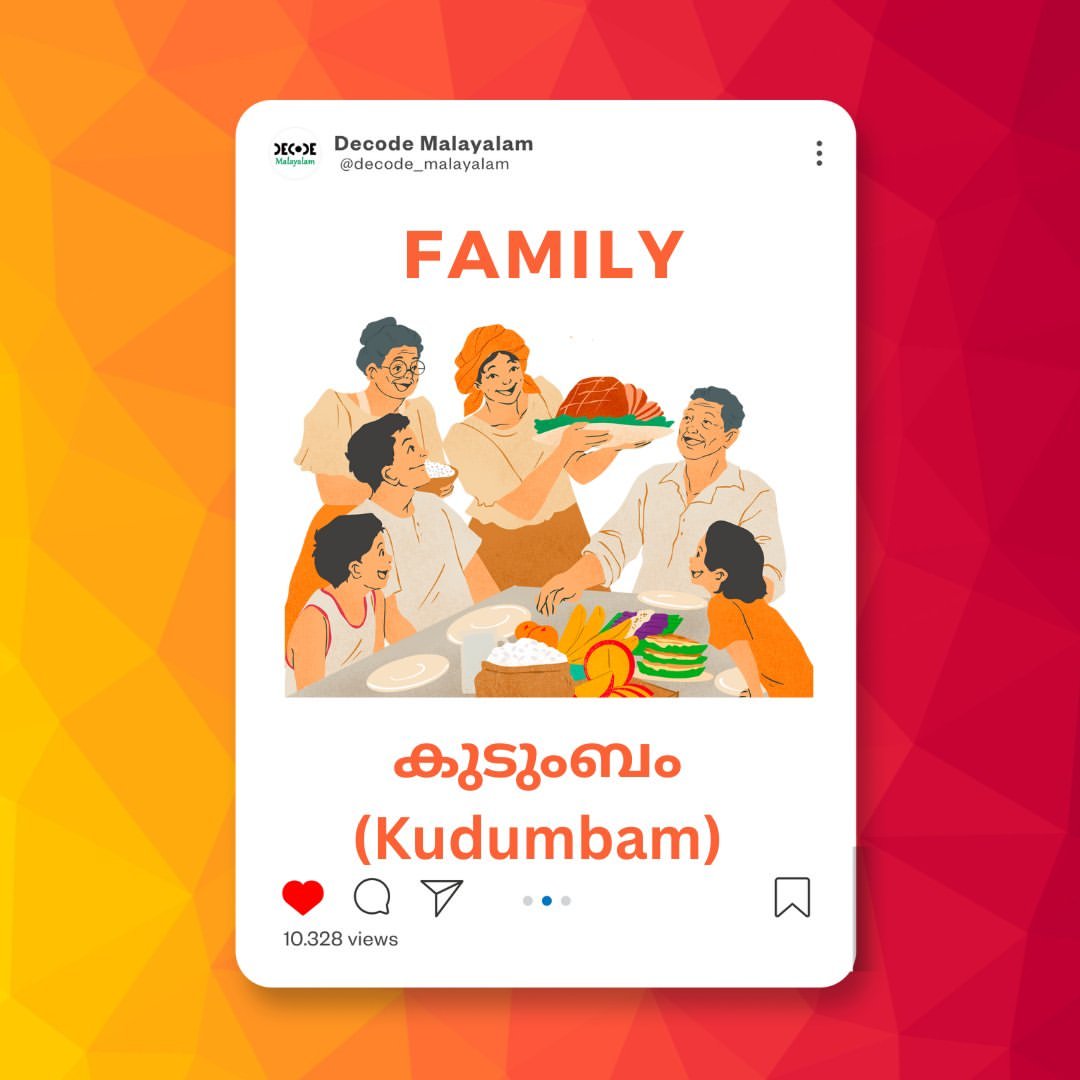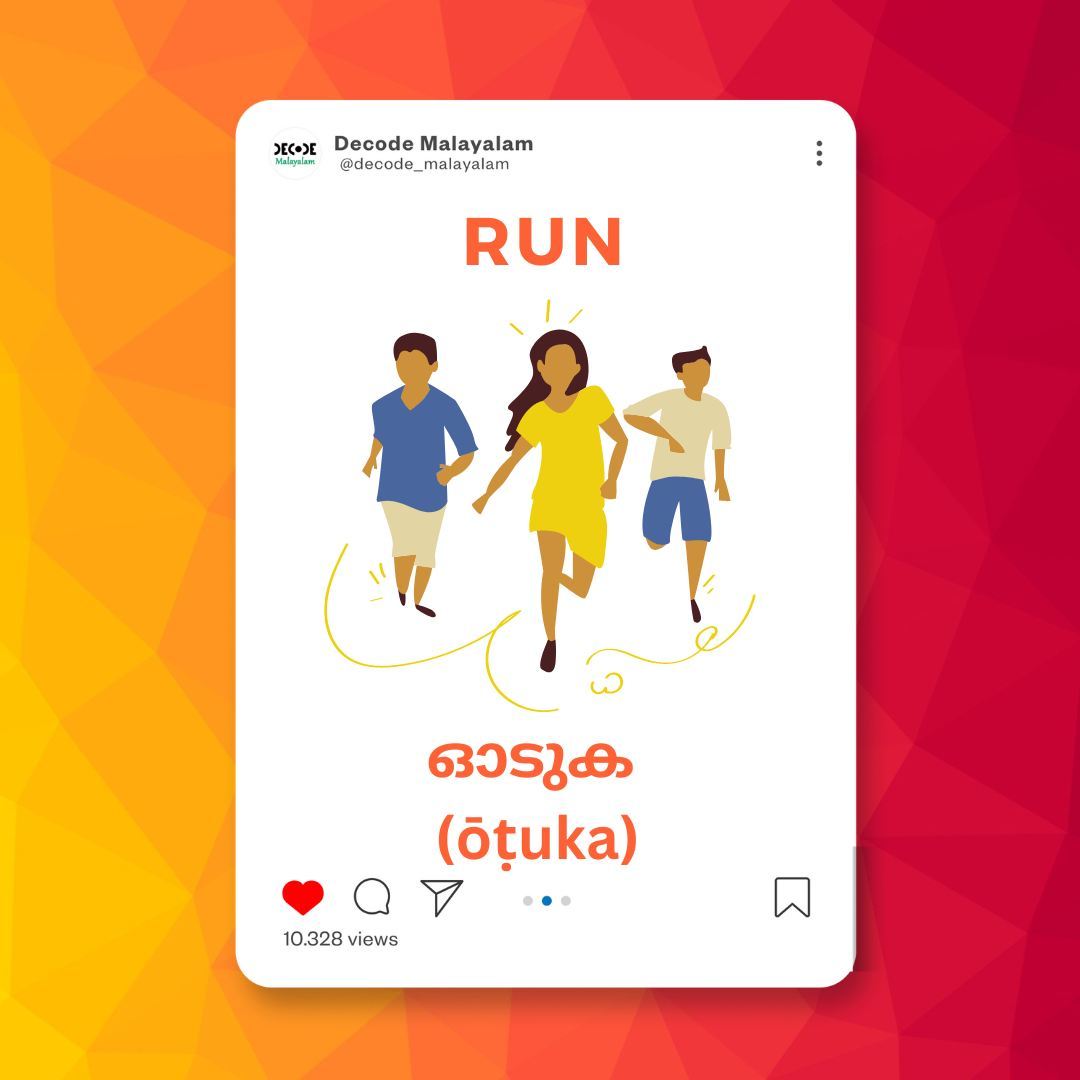Vegetable Names in Tamil: The Ultimate Guide
காய்கறிகளின் பெயர்கள் தமிழில்: முழுமையான வழிகாட்டி
Welcome, language learners and food enthusiasts! Are you on a quest to master the Tamil language and explore the rich culinary landscape of Tamil Nadu? One of the most essential topics to learn is the names of common vegetables. Tamil cuisine is a celebrated part of Indian food culture, known for its vibrant flavors, aromatic spices, and a heavy reliance on fresh, locally sourced vegetables. From the fiery Sambar to the comforting Poriyal, vegetables form the heart and soul of a typical Tamil meal.
Learning the names of vegetables in Tamil will not only enrich your vocabulary but also make your travel to Tamil Nadu or a visit to a local Indian grocery store much more rewarding. Imagine being able to ask for your favorite vegetable by its proper name! This comprehensive guide is designed for beginners and will help you master the names of over 150 vegetables, complete with their Tamil script, English translation, and a simple pronunciation guide.
Why Learning Vegetable Names is Important
For any language learner, vocabulary is the foundation. When it comes to a practical language like Tamil, knowing everyday words is crucial for daily conversations. Whether you are bargaining at a market, following a traditional recipe, or simply trying to understand a menu, these words will prove invaluable. Moreover, understanding the names of different vegetables gives you a window into the local culture and dietary habits.
The Tamil word for ‘vegetable’ is காய்கறி (Kaay-kaRi). The word காய் (Kaay) literally means ‘unripe fruit’ or ‘vegetable’, and கறி (KaRi) can refer to a ‘curry’ or ‘dish’. Let’s dive into the list, which is organized alphabetically in English for your convenience.
Root Vegetables (வேர் காய்கறிகள் – Vaer Kaay-kaRi-gal)
- Beetroot: பீட்ரூட் (Beetroot) – Known for its vibrant color and earthy sweetness, often used in salads and curries.
- Carrot: கேரட் (Kae-rat) – A popular vegetable used in both savory and sweet dishes like Gajar Halwa.
- Potato: உருளைக்கிழங்கு (Uru-lai-ki-zha-ngu) – A staple in almost all cuisines, used in curries, fries, and roasts.
- Radish: முள்ளங்கி (Mu-lla-ngi) – Used in Sambar and stir-fries, known for its pungent flavor.
- Sweet Potato: சர்க்கரைவள்ளிக்கிழங்கு (Sa-rk-ka-rai-va-lli-ki-zha-ngu) – A sweet and nutritious root, often boiled or roasted.
- Taro Root / Colocasia: சேப்பங்கிழங்கு (Sae-ppan-ki-zha-ngu) – A starchy vegetable used in thick gravies and fries.
- Turnip: கந்த சக்கரவள்ளிக்கிழங்கு (Ka-ndha Sa-k-ka-ra-va-lli-ki-zha-ngu) – Used in various stews and curries.
- Onion (Small): சின்ன வெங்காயம் (Si-nna Ve-nga-a-yam) – Highly favored in Tamil cooking for its strong flavor, especially in stir-fries and Sambar.
- Onion (Big): பெரிய வெங்காயம் (Pe-riya Ve-nga-a-yam) – A common ingredient in most dishes.
- Ginger: இஞ்சி (In-ji) – An essential spice and vegetable used for its pungent and medicinal properties.
- Garlic: பூண்டு (Poo-ndu) – A flavor-rich ingredient used in almost all Tamil curries and gravies.
Leafy Greens (கீரைகள் – Kee-raigal)
Leafy greens are a cornerstone of a healthy diet in Tamil culture. The word for leafy greens is கீரை (Kee-rai), and they are often prepared as simple stir-fries called Poriyal or a curry called Keerai Sambar.
- Spinach: பசலைக்கீரை (Pa-sa-lai-k-kee-rai)
- Amaranth Leaves: அரைக்கீரை (A-rai-k-kee-rai) or தண்டங்கீரை (Tha-nda-ng-kee-rai)
- Drumstick Leaves: முருங்கைக் கீரை (Mu-ru-ngai-k Kee-rai) – Highly nutritious and used in soups and stir-fries.
- Fenugreek Leaves: வெந்தயக்கீரை (Ve-ndha-ya-k-kee-rai) – Used for its distinct bitter flavor in curries and flatbreads.
- Curry Leaves: கறிவேப்பிலை (Ka-Ri-vae-ppi-lai) – An absolute must-have in almost every Tamil dish for its aromatic flavor.
- Coriander Leaves: கொத்தமல்லி இலை (Ko-ththa-ma-lli I-lai) – Used as a garnish and a key ingredient in many gravies.
Common Vegetables (பொதுவான காய்கறிகள் – Po-dhu-vaana Kaay-kaRi-gal)
- Tomato: தக்காளி (Tha-k-kaa-li) – The base for many curries and gravies.
- Brinjal / Eggplant: கத்தரிக்காய் (Ka-ththa-ri-k-kaay) – A versatile vegetable used in Sambar, Poriyal, and a special Brinjal Curry.
- Drumstick: முருங்கைக்காய் (Mu-ru-ngai-k-kaay) – A long, green pod, used extensively in Sambar and Aviyal for its unique taste.
- Lady’s Finger / Okra: வெண்டைக்காய் (Ve-ndai-k-kaay) – A popular vegetable for simple stir-fries and Sambar.
- Green Chilli: பச்சை மிளகாய் (Pa-chcha-i Mi-la-gaay) – Provides the main heat in most Tamil dishes.
- Cauliflower: கோஸ் பூ (Go-s Poo) – Used in curries, stir-fries, and the famous Gobi Manchurian.
- Cabbage: முட்டைக்கோஸ் (Mu-ttai-k-ko-s) – Often finely shredded and used in stir-fries.
- Capsicum / Bell Pepper: குடைமிளகாய் (Ku-dai-mi-la-gaay) – Adds a sweet and pungent flavor to dishes.
- Pumpkin: பூசணிக்காய் (Poo-sa-Ni-k-kaay) – Used in both savory curries and sweet desserts.
- Bottle Gourd: சுரைக்காய் (Su-rai-k-kaay) – A watery vegetable used in Koottu and curries.
- Ridge Gourd: பீர்க்கங்காய் (Peer-k-kan-gaay) – A common vegetable used in stir-fries and gravies.
- Snake Gourd: புடலங்காய் (Pu-da-lan-gaay) – Used in Koottu and stir-fries.
- Bitter Gourd: பாகற்காய் (Paa-ga-r-k-kaay) – Known for its bitterness, but highly prized for its medicinal properties.
- Cucumber: வெள்ளரிக்காய் (Ve-lla-ri-k-kaay) – A cooling vegetable used in salads and Pachadi.
- Ash Gourd / Winter Melon: வெள்ளை பூசணி (Ve-llai Poo-sa-Ni) – Used to make Aviyal and desserts.
- Cluster Beans: கொத்தவரங்காய் (Ko-ththa-va-ra-n-gaay) – A fibrous vegetable used in Poriyal and curries.
- Broad Beans: அவரைக்காய் (A-va-rai-k-kaay) – A legume used in Sambar and Poriyal.
- Tindora / Ivy Gourd: கோவைக்காய் (Ko-vai-k-kaay) – Used in stir-fries and curries.
- Mushroom: காளான் (Kaa-laa-n) – Popular for vegetarian curries and biryanis.
- Green Beans: பீன்ஸ் (Beens) – A common vegetable used in stir-fries and Sambar.
- Corn: மக்காச்சோளம் (Ma-k-kaa-ch-cho-lam) – Used in salads, soups, and snacks.
Pulses and Legumes (பயறு வகைகள் – Pa-ya-Ru Va-ga-igal)
Pulses and legumes, though technically not always “vegetables,” are integral to Tamil cuisine and often found in the vegetable section of a market.
- Lentils: பருப்பு (Pa-ru-ppu) – The heart of Sambar and Dal.
- Chickpeas: கொண்டைக்கடலை (Ko-ndai-k-ka-da-lai) – Used in curries and snacks.
- Peas: பயறு (Pa-ya-Ru) – Used in various curries and side dishes.
List of Vegetable Names in Tamil: A-Z Dictionary
Here is a more extensive and organized list of vegetable names to expand your vocabulary. Memorize them, and try to use them in daily conversation.
- Amla / Gooseberry: நெல்லிக்காய் (Ne-lli-k-kaay)
- Ash Gourd: வெள்ளை பூசணி (Ve-llai Poo-sa-Ni)
- Beans: பீன்ஸ் (Beens)
- Beetroot: பீட்ரூட் (Beetroot)
- Bitter Gourd: பாகற்காய் (Paa-ga-r-k-kaay)
- Bottle Gourd: சுரைக்காய் (Su-rai-k-kaay)
- Brinjal / Eggplant: கத்தரிக்காய் (Ka-ththa-ri-k-kaay)
- Cabbage: முட்டைக்கோஸ் (Mu-ttai-k-ko-s)
- Capsicum: குடைமிளகாய் (Ku-dai-mi-la-gaay)
- Carrot: கேரட் (Kae-rat)
- Cauliflower: காலிஃப்ளவர் (Kaa-li-fla-va-r) or கோஸ் பூ (Gos Poo)
- Chilli (Green): பச்சை மிளகாய் (Pa-chcha-i Mi-la-gaay)
- Cluster Beans: கொத்தவரங்காய் (Ko-ththa-va-ra-n-gaay)
- Colocasia / Taro Root: சேப்பங்கிழங்கு (Sae-ppan-ki-zha-ngu)
- Cucumber: வெள்ளரிக்காய் (Ve-lla-ri-k-kaay)
- Drumstick: முருங்கைக்காய் (Mu-ru-ngai-k-kaay)
- Garlic: பூண்டு (Poo-ndu)
- Ginger: இஞ்சி (In-ji)
- Jackfruit (Raw): பலாக்காய் (Pa-laa-k-kaay)
- Ivy Gourd: கோவைக்காய் (Ko-vai-k-kaay)
- Lady’s Finger / Okra: வெண்டைக்காய் (Ve-ndai-k-kaay)
- Mushroom: காளான் (Kaa-laa-n)
- Onion (Small): சின்ன வெங்காயம் (Si-nna Ve-nga-a-yam)
- Onion (Big): பெரிய வெங்காயம் (Pe-riya Ve-nga-a-yam)
- Potato: உருளைக்கிழங்கு (Uru-lai-k-ki-zha-ngu)
- Pumpkin: பூசணிக்காய் (Poo-sa-Ni-k-kaay)
- Radish: முள்ளங்கி (Mu-lla-ngi)
- Ridge Gourd: பீர்க்கங்காய் (Peer-k-kan-gaay)
- Snake Gourd: புடலங்காய் (Pu-da-lan-gaay)
- Sweet Potato: சர்க்கரைவள்ளிக்கிழங்கு (Sa-rk-ka-rai-va-lli-k-ki-zha-ngu)
- Tapioca: மரவள்ளிக்கிழங்கு (Ma-ra-va-lli-k-ki-zha-ngu)
- Tomato: தக்காளி (Tha-k-kaa-li)
- Turnip: கந்த சக்கரவள்ளிக்கிழங்கு (Ka-ndha Sa-k-ka-ra-va-lli-k-ki-zha-ngu)
- Yam: சேனைக்கிழங்கு (Sae-nai-k-ki-zha-ngu)
Essential Phrases for Learners
Now that you know the names of the vegetables, let’s learn some useful phrases you can use at a market or in a conversation.
- What is this vegetable called?: இந்த காய்க்கு என்ன பெயர்? (Indha kaaykku enna peyar?)
- How much is one kilo of potatoes?: ஒரு கிலோ உருளைக்கிழங்கு எவ்வளவு? (Oru kilo urulaikkizhangu evvalavu?)
- Please give me half a kilo of tomatoes.: அரை கிலோ தக்காளி கொடுங்கள், தயவுசெய்து. (Arai kilo thakkali kodungal, thayavu-seithu.)
- Is this fresh?: இது புதியதா? (Idhu pudhiyathaa?)
- I need vegetables for Sambar.: சாம்பாருக்கு காய்கறிகள் வேண்டும். (Sambaarukku kaay-kaRigal vendum.)
For more essential phrases and conversational Tamil, check out our guide on Basic Tamil Words for Beginners.
Vegetables and Their Role in Tamil Cuisine
Tamil cuisine is predominantly vegetarian, with vegetables playing a central role in most meals. Understanding the different ways vegetables are cooked will further enhance your appreciation for this cuisine.
- Sambar (சாம்பார்): A lentil-based vegetable stew. This is perhaps the most famous Tamil dish. Vegetables like drumstick, brinjal, radish, and pumpkin are commonly used.
- Poriyal (பொரியல்): A simple stir-fry of a single vegetable, usually with mustard seeds, urad dal, and grated coconut. Okra, cluster beans, and cabbage are popular choices for Poriyal.
- Koottu (கூட்டு): A semi-solid curry made with a vegetable and lentils or pulses. Bottle gourd, snake gourd, and ridge gourd are often prepared as Koottu.
- Aviyal (அவியல்): A mixed vegetable curry cooked with coconut and yogurt, common in the Kongu Nadu region of Tamil Nadu. It includes a variety of vegetables like carrots, beans, pumpkin, and ash gourd.
Just like vegetables, fruits also hold a significant place in the Tamil diet, both for health and as part of festivals and offerings. To continue your vocabulary journey, you might find our article on Fruits Names in Tamil very useful!
Extensive List of Vegetables in Tamil with Pronunciation and Meaning
A-B
- Amla / Indian Gooseberry: நெல்லிக்காய் (Ne-lli-k-kaay)
- Ash Gourd: வெள்ளை பூசணி (Ve-llai Poo-sa-Ni)
- Avocado: வெண்ணெய்ப்பழம் (Ve-nnai-p-pa-zham) – Though technically a fruit, it is used as a vegetable.
- Beans: பீன்ஸ் (Beens)
- Beetroot: பீட்ரூட் (Beetroot)
- Bitter Gourd: பாகற்காய் (Paa-ga-r-k-kaay)
- Bottle Gourd: சுரைக்காய் (Su-rai-k-kaay)
- Broad Beans: அவரைக்காய் (A-va-rai-k-kaay)
- Broccoli: புரோக்கோலி (Pro-k-ko-li)
- Brinjal / Eggplant: கத்தரிக்காய் (Ka-ththa-ri-k-kaay)
C-D
- Cabbage: முட்டைக்கோஸ் (Mu-ttai-k-ko-s)
- Capsicum / Bell Pepper: குடைமிளகாய் (Ku-dai-mi-la-gaay)
- Carrot: கேரட் (Kae-rat)
- Cassava: மரவள்ளிக்கிழங்கு (Ma-ra-va-lli-k-ki-zha-ngu)
- Cauliflower: காலிஃப்ளவர் (Kaa-li-fla-va-r)
- Celery: செலரி (Se-la-ri)
- Chilli (Green): பச்சை மிளகாய் (Pa-chcha-i Mi-la-gaay)
- Chilli (Red): சிவப்பு மிளகாய் (Si-va-ppu Mi-la-gaay)
- Cluster Beans: கொத்தவரங்காய் (Ko-ththa-va-ra-n-gaay)
- Coconut (Tender): இளநீர் (I-la-neer) – Not a vegetable, but used in some dishes.
- Coriander Leaves: கொத்தமல்லி இலை (Ko-ththa-ma-lli I-lai)
- Corn: மக்காச்சோளம் (Ma-k-kaa-ch-cho-lam)
- Cucumber: வெள்ளரிக்காய் (Ve-lla-ri-k-kaay)
- Curry Leaves: கறிவேப்பிலை (Ka-Ri-vae-ppi-lai)
- Drumstick: முருங்கைக்காய் (Mu-ru-ngai-k-kaay)
E-H
- Elephant Foot Yam: கருணைக்கிழங்கு (Ka-ru-nai-k-ki-zha-ngu)
- Fenugreek Leaves: வெந்தயக்கீரை (Ve-ndha-ya-k-kee-rai)
- French Beans: பீன்ஸ் (Beens)
- Garlic: பூண்டு (Poo-ndu)
- Ginger: இஞ்சி (In-ji)
- Green Peas: பட்டாணி (Pa-t-taa-Ni)
- Guava (Raw): கொய்யாக்காய் (Ko-yyaa-k-kaay) – Also used as a vegetable.
I-P
- Ivy Gourd: கோவைக்காய் (Ko-vai-k-kaay)
- Jackfruit (Raw): பலாக்காய் (Pa-laa-k-kaay)
- Jasmine (Raw): முருங்கைக்காய் (Mu-ru-ngai-k-kaay)
- Ladies Finger / Okra: வெண்டைக்காய் (Ve-ndai-k-kaay)
- Leek: லீக்ஸ் (Leeks)
- Lemon: எலுமிச்சை (E-lu-mi-ch-chai) – Though a fruit, it’s used as a souring agent.
- Lotus Stem: தாமரைக்கிழங்கு (Thaa-ma-rai-k-ki-zha-ngu)
- Mint Leaves: புதினா (Pu-dhi-naa)
- Mushroom: காளான் (Kaa-laa-n)
- Onion (Big): பெரிய வெங்காயம் (Pe-riya Ve-nga-a-yam)
- Onion (Small): சின்ன வெங்காயம் (Si-nna Ve-nga-a-yam)
- Papaya (Raw): பப்பாளிக்காய் (Pa-p-paa-li-k-kaay)
- Potato: உருளைக்கிழங்கு (Uru-lai-k-ki-zha-ngu)
- Pumpkin: பூசணிக்காய் (Poo-sa-Ni-k-kaay)
R-Z
- Radish: முள்ளங்கி (Mu-lla-ngi)
- Ridge Gourd: பீர்க்கங்காய் (Peer-k-kan-gaay)
- Snake Gourd: புடலங்காய் (Pu-da-lan-gaay)
- Spinach: பசலைக்கீரை (Pa-sa-lai-k-kee-rai)
- Sweet Potato: சர்க்கரைவள்ளிக்கிழங்கு (Sa-rk-ka-rai-va-lli-k-ki-zha-ngu)
- Taro Root / Colocasia: சேப்பங்கிழங்கு (Sae-ppan-ki-zha-ngu)
- Tapioca: மரவள்ளிக்கிழங்கு (Ma-ra-va-lli-k-ki-zha-ngu)
- Tomato: தக்காளி (Tha-k-kaa-li)
- Turnip: கந்த சக்கரவள்ளிக்கிழங்கு (Ka-ndha Sa-k-ka-ra-va-lli-k-ki-zha-ngu)
- Yam: சேனைக்கிழங்கு (Sae-nai-k-ki-zha-ngu)
- Zucchini: சுக்கினி (Su-k-ki-ni) – Less common in traditional Tamil cooking.
Frequently Asked Questions (FAQs)
The Tamil word for ‘vegetable’ is காய்கறி (Kaay-kaRi). The plural form is காய்கறிகள் (Kaay-kaRi-gal).
Yes, while the common names are widely understood, there can be slight variations or colloquial names for certain vegetables depending on the region of Tamil Nadu (e.g., Kongu Nadu, Chettinad, etc.). However, the names listed in this guide are the most standard and widely recognized.
The best way to remember them is to use them! Start by practicing with 5-10 common vegetables like potato, onion, and tomato. Next time you cook, try to name the vegetable in Tamil. Visit a local market and try to ask for vegetables by their Tamil names. Repetition and real-world application are key to language learning.
In a culinary context, many items that are botanically fruits (like tomato, brinjal, and raw jackfruit) are used and referred to as vegetables. Similarly, the Tamil word காய் (Kaay) refers to an ‘unripe’ fruit which is used as a vegetable, while பழம் (Pa-zham) refers to a ‘ripe’ fruit. This distinction is important in Tamil cooking.
Potato (உருளைக்கிழங்கு), Onion (வெங்காயம்), Tomato (தக்காளி), Brinjal (கத்தரிக்காய்), and Drumstick (முருங்கைக்காய்) are some of the most commonly used vegetables in a typical Tamil household.
The word for ‘leafy greens’ is கீரை (Kee-rai). It is a collective term for all types of leafy vegetables, such as spinach or amaranth leaves.
Absolutely! This guide focuses on vegetables, but you can explore other food categories. For example, our article on Food in Tamil provides a broader vocabulary. You’ll find that many of the principles of pronunciation and word formation are similar.
While the transliteration is helpful for pronunciation, learning the Tamil script (தமிழ் எழுத்துக்கள் – Ta-mil E-zhuth-thuk-kal) will greatly enhance your learning experience. It helps you read signs, menus, and even simple newspaper headlines. You can check out our guide on Tamil Alphabets to get started.
Conclusion
We hope this extensive guide has been a valuable resource in your journey to learn Tamil. Knowing the names of vegetables is a fun and practical step that connects you to the heart of Tamil culture and its celebrated cuisine. Continue practicing these words, and don’t hesitate to use them in your daily life. The more you use them, the more natural they will become.
For more Tamil learning resources, from basic words to grammar and pronunciation, feel free to explore the rest of our blog at DecodeTamil.com. Happy learning!








